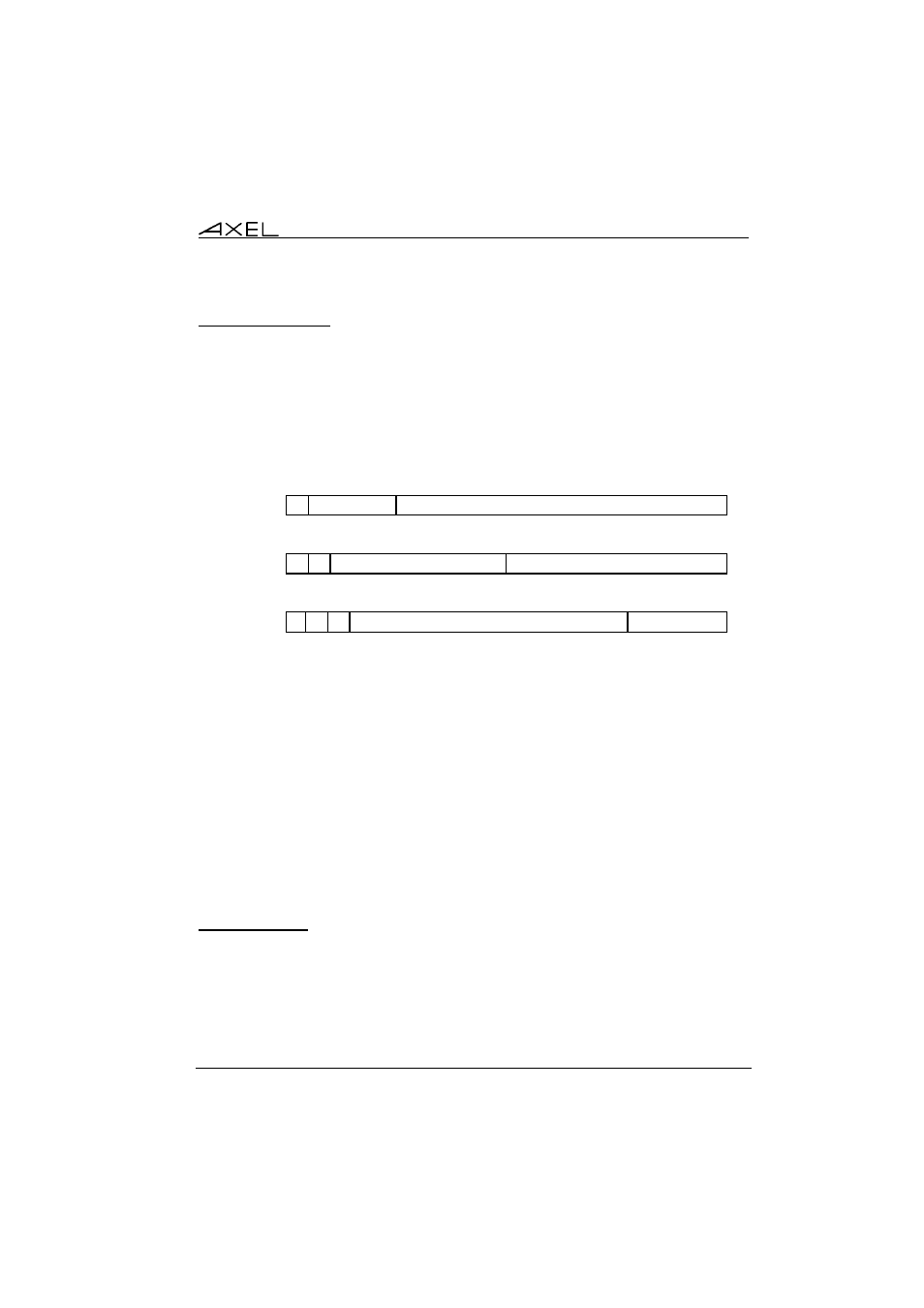Axel AX4000 User's Manual User Manual
Page 67

Appendix
AXEL Office Server
61
A.1.2 - IP Address
Every device connected to an Ethernet network must have a single 32-bit
address, which encodes network and host ID. Internet addresses (sometimes
called «IP addresses») are usually written as four decimal numbers separated
by decimal points ('.' character).
There are three main classes of IP address:
7 bits
24 bits
Class A
0 Network
Host
14 bits
16 bits
Class B
1 0
Network
Host
21
bits
8
bits
Class C
1 1 0
Network
Host
Thus every IP address occupies 4 bytes and contains both:
- a network address, and
- a host address.
even though these may be of varying lengths.
Note: all devices attached to the same network must have the same class and
the same network address. Each must have a different host address.
For example: an Office Server connected, over a network, to a host with an IP
address 192.1.168.40 (class C: three bytes for the Network address) must have
the three first bytes of its address set to 192.1.168. The fourth byte cannot be
equal to 40.
A.1.3 - Routers
Depending on the network topology, the Office Server and the host may be
installed on different physical networks and linked through one or several
routers. In this configuration, any router that is to be declared in the Office
Server set-up must belong to the same physical network as the Office
Server.